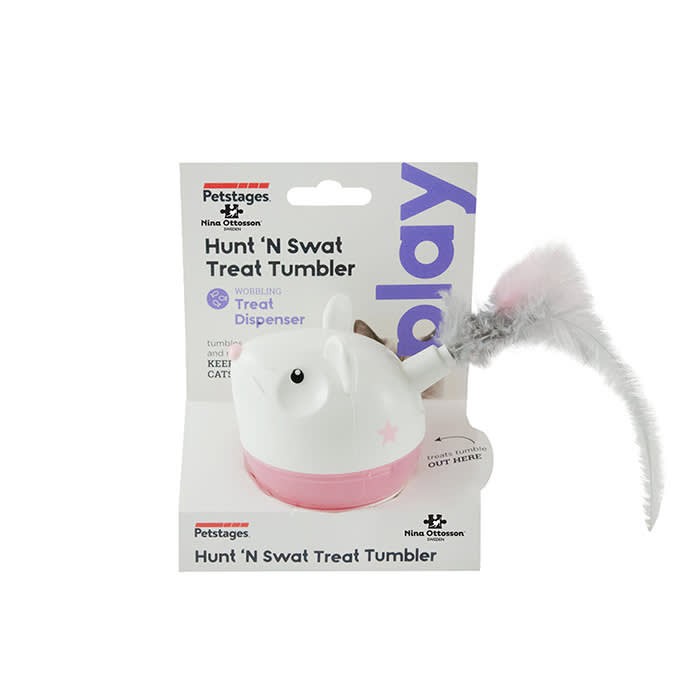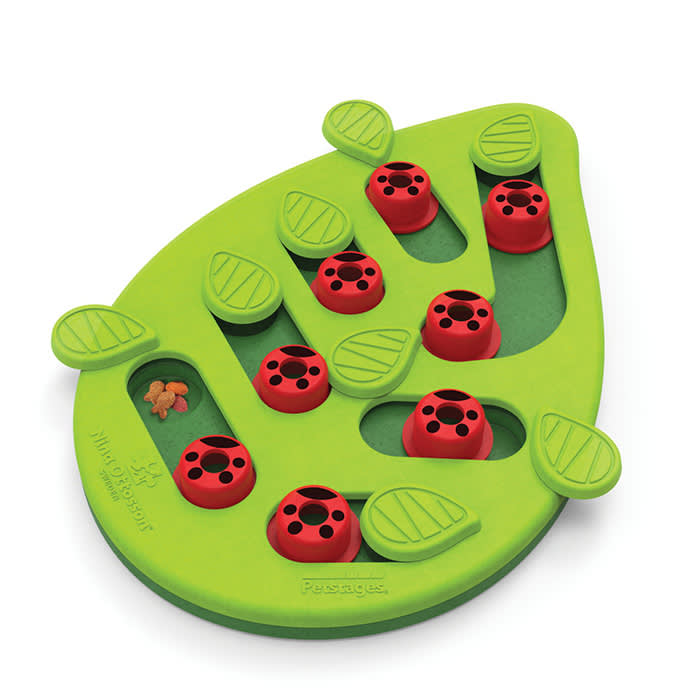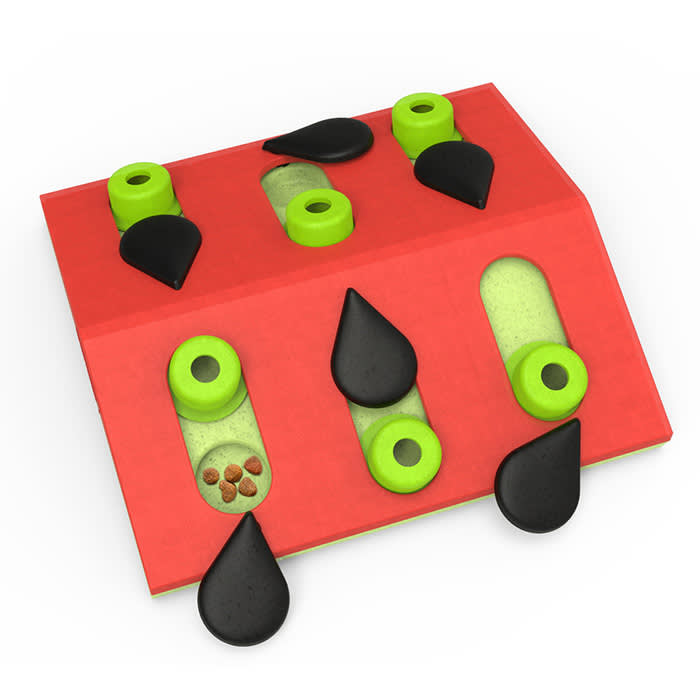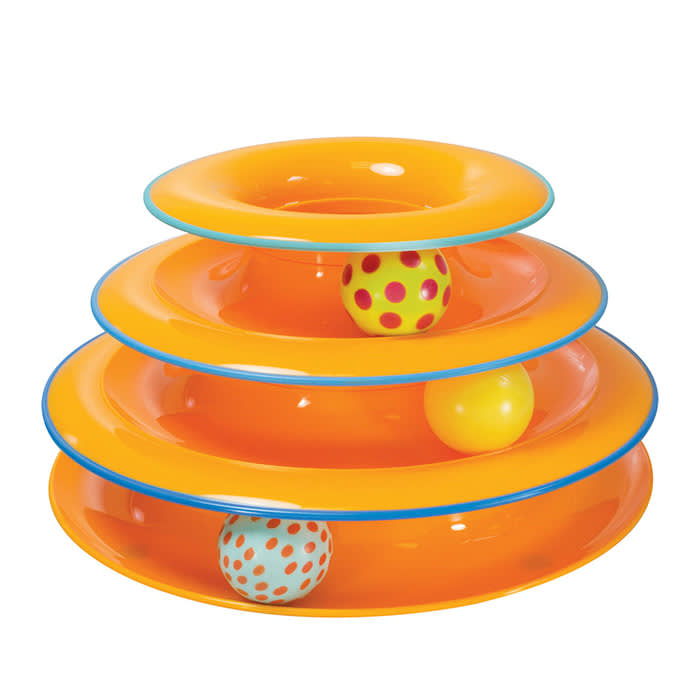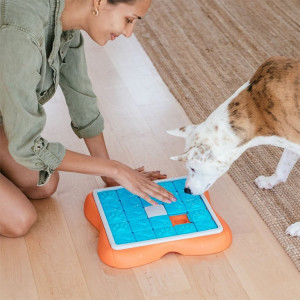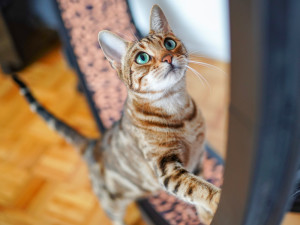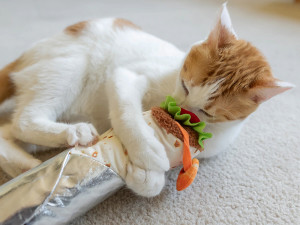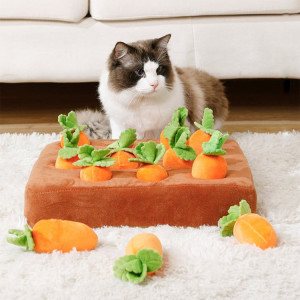The 5 Best Interactive Cat Toys By Nina Ottosson
The puzzle toys that’ll unleash your cat’s inner cougar.
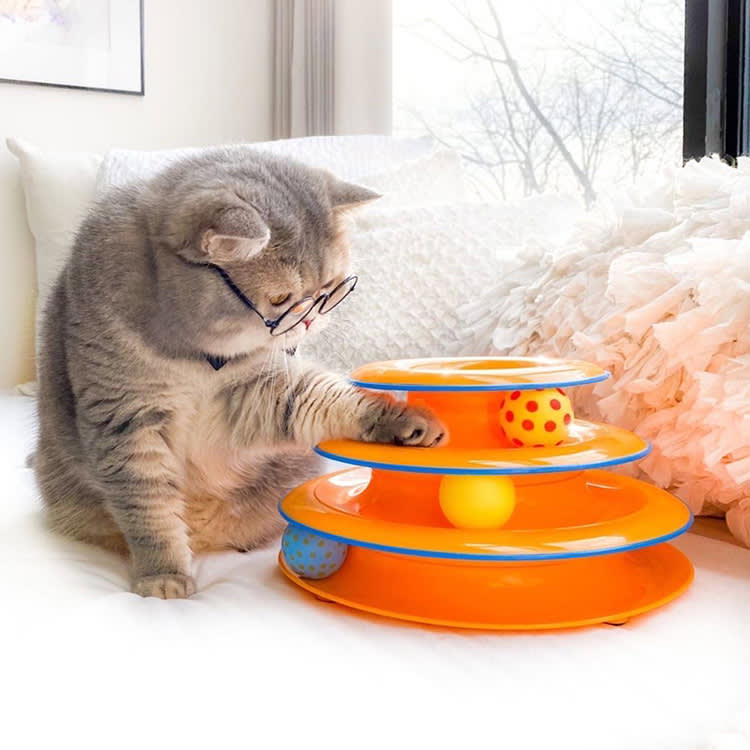
share article

Your pet wants you to read our newsletter. (Then give them a treat.)
Nina Ottosson is a titan of the interactive-toy industry and considered one of the best at developing and designing educational activity puzzle games for animals by pet psychologists and trainers. Ottosson pioneered the concept that pets require mental, as well as physical, enrichment, and she develops innovative products that make a difference in the lives of pets and their parents.
“Since 1990, I have worked with development and design of dog and cat activity toys and games that stimulate our pets mentally,” Ottosson tells The Wildest. “The games are fun and educational, easy to play with indoors or outdoors, and are developed with the dog’s and cat’s natural movements and instincts in mind.” All of Ottosson’s toys are tested by pets, which is likely why they’ve been so universally well received. Her other priority is to use materials that are safe for pets and the environment. She shares why she has made it her life’s work to keep cats bodies and minds busy.
Why is it particularly important for cats to have mental stimulation as well as physical exercise?
Cats are natural-born hunters, and puzzles stimulate cats’ natural foraging instincts. Cats “hunt” for their reward by working to reveal hidden treats and food. Indoor cats especially become easily bored and under-stimulated, and puzzles are great enrichment for them. To encourage your cat’s natural hunting instincts, you can place treat-puzzles in different places each day.
How do cats respond to puzzles differently than dogs?
Cats usually play and eat when they wantopens in a new tab, not when you want. You may have to fill up the puzzle and wait for the cat to get hungry or interested enough. Try hiding treat-puzzles in different rooms, behind the sofa, or behind a door. Then the cat can play and hunt whenever they want.
Why is it important for cats to test their problem-solving skills?
Same as for dogs: Puzzle games are not a test for problem-solving skills; it is more like a “tool” for the cat to use their natural instincts. Just as we give our children toys to play with, like Legos. It’s not the finalized result we strive for. It is the time they try and play their way to a result that is important, not to evaluate their abilities.
Cats love and need to play and explore in their own way, and treat-puzzle games are a fun and easy way to stimulate the cats’ senses — mind and nose — by using their natural instincts. A cat needs an outlet for their energy daily; some require more than others, but all cats need it in different ways.
The way I see it, the journey is more important than the destination. It’s about the experience itself for the cat and enjoying the activity as well as the reward, not just to reach the goal of solving the puzzle. You have to keep trying; like when you are hunting in nature, you don’t always catch something.
How do you test puzzle toys for cats?
I have always been interested in enrichment, which was also the reason why I started developing puzzle games. I have always liked to explore and test different problem-solving skills with dogs and cats, and then study how they do, what they can do and what they like to do, which I then apply to the puzzle games. This is something that I have been passionate about when I started developing puzzle games for dogs and cats. [I] worked on [this] for over 30 years. I test all of my prototypes with different dogs and cats and observe how they play with them and what can be changed and improved.
What kind of treats do you recommend adding to interactive puzzle toys for cats?
Cats can be finicky eaters, so it usually has to be something really tasty worth working for. For example, shrimp or tuna. If you have a food-motivated cat, they will probably work for their food.
How do you suggest cat parents get started introducing puzzle toys to their cat?
Plan playtime around mealtime, when the cat is hungry. Put very tasty treats in all the compartments, with some of them visible. Cats usually want to investigate when they get something new. Leave the puzzle game on the floor and let the cat decide when they want to try and play. Show the cat how it works and help them get started.
Best Interactive Toys for Cats by Level
It can be hard to know what level to start your cat on with interactive toys. Maybe you have a Bengal who’s bouncing off the walls 24/7 who you think could master an advanced toy in no time. While it’s tempting to throw a challenge their way — especially if they’ve been pestering you day in and day out — it’s important to know your cat’s limits and start them slow. Learning something new takes time, so being a patient teacher is key.
Btw, our editors (and their pets) picked out these products. They’re always in stock at the time we publish, but there’s a chance they’ll sell out. If you do buy through our links, we may earn a commission. (We’ve got a lot of toys to buy over here, you know?)
Level One
Level Two
Level Three
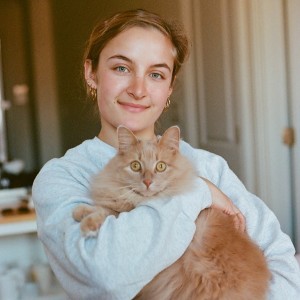
Avery Felman
Avery is a writer and producer. She has written for numerous publications, including Refinery29, BuzzFeed, and V Magazine. When she’s not at her computer, you can find her reading, practicing her Greek on Duolingo, and delving into the Sex and the City discourse. She lives in Brooklyn, New York with her husband and their cat, Chicken, who rules with an iron fist.
Related articles
![Woman and white dog playing with puzzle.]() opens in a new tab
opens in a new tab6 Genius Interactive Dog Toys From Nina Ottosson
These puzzle toys are made to help you bond with your pup.
![Three cat puzzles on a colorful pink, burgundy, and green color-block background]() opens in a new tab
opens in a new tabThe Best Puzzles to Unleash Your Cat’s Inner Einstein
Genius takes many forms. Could your cat be one?
![Bengal cat running on indoor wheel]() opens in a new tab
opens in a new tab11 High-Tech Toys Your Cat Will Go Wild For
Stoke your little lion’s hunting instinct with these electronic cat toys.
![Woman with white cat on her lap]() opens in a new tab
opens in a new tabPlay
Keep your pet entertained for hours with our top picks, from cult-favorite toys to interactive puzzles.
![White and tan cat playing with a taco toy]() opens in a new tab
opens in a new tab14 Food-Themed Toys to Tease Your Cat
From burritos to baguettes, these catnip-stuffed toys may curb your cat’s munchies.
![cat with interactive carrot puzzle toy]() opens in a new tab
opens in a new tabThis Plush Carrot-Puzzle Toy Will Satiate Your Food-Motivated Cat
Finally, something engaging to distract them from...real food.
